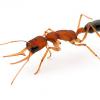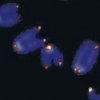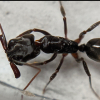When I read that S. Invicta nanitics come after about 2 weeks, I kid you not, I was actually a little stunned. I mean, with that growth rate, could you imagine if they were polygynous?
For one, no. It takes about a month for them to get nanitics. Two, they are polygynous.
Yeah, S. invicta is probably best left alone. Fluon and good lids could contain them. The bigger problem is that their colonies grow way bigger than the average person really wants to deal with. It’s like a cute gremlin until you feed it after midnight.
What is cute about them to begin with? I mean, except for the queens. They look innocent enough...
























